The week at a glance
- Eastern Kingbird, Belted Kingfisher, Yellow-rumped and Blackpoll Warblers in Galway
- Yellow-rumped Warbler still in Cork
- Sykes's Warbler and Gray-cheeked Thrush on Scilly
- White's Thrush in Cornwall
Despite laying claim to some top-class rarities in recent autumns, County Galway is often overshadowed by other western Irish counties — Clare and Cork, for example. However, Galway created its own remarkable piece of history this week as it claimed a minimum of four different Nearctic landbirds over an incredible few days out west, the haul being topped by Ireland's (and the Western Palearctic's) first Eastern Kingbird.

Eastern Kingbird, Inishmore, Galway (Photo: Dermot Breen)
This species has long been on the radar of British and Irish birders as a potential vagrant. Hugh Delaney finally ended the wait as he stumbled across this remarkable tyrant flycatcher catching butterflies and other insects from stone walls and houses around Kilmurvey, on the island of Inishmore. A handful of Galway birdwatchers heading to the island for the weekend that evening (plus one or two close enough to reach the island that day) were the lucky few to witness one of the most momentous finds of the century so far, for the kingbird had departed the following morning — much to the dismay of several British and Irish teams that made the overnight trip west.
For some, though, the disappointment was short-lived. While most were panicking about the kingbird and the associated twitch logistics, a convincing description of a Belted Kingfisher (seen by a non-birder) filtered out from the heart of Connemara. Thus, the morning of Saturday 6th was bittersweet: the absence of the kingbird coincided with the firming up of the kingfisher — a male — which was still present by the fish farm at the west end of Lough Fee! Not a bad 'bonus bird' for Galway to be hosting...
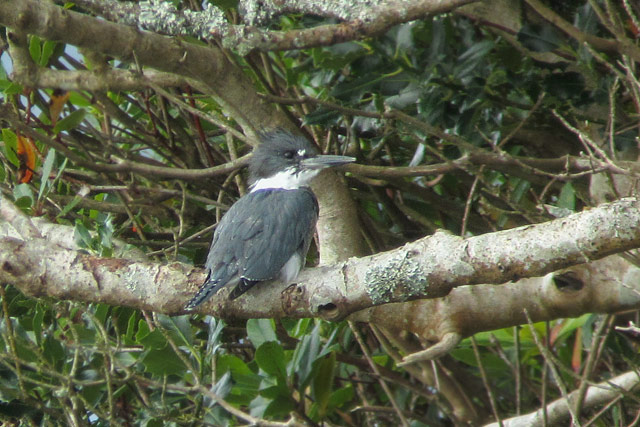
Belted Kingfisher, Lough Fee, Galway (Photo: Josh Jones)
Although mobile, the kingfisher continued to show well throughout the morning until, at around 12:45, it suddenly flew off high, climbing over the mountain ridge to the south of the loch and appearing to drop down into the next valley. A chance encounter with the bird, flying over the N59 at Kylemore Lough some 7km from the original sighting, allowed a small contingent of late-arriving birders to watch the bird until late afternoon, when it flew off east, never to be seen again!
Meanwhile, back on Inishmore, would-be kingbird twitchers had turfed out yet more top-quality Nearctic compensation, this time in the form of at least one Yellow-rumped Warbler on the island. Sightings from three locations up to five miles apart gave the two-bird theory some credibility, although proving it may be difficult. As if that wasn't enough, the following day (Sunday 7th) a Blackpoll Warbler was found on the island, again courtesy of Hugh Delaney, and a Woodchat Shrike, a county first, turned up there on 10th — a fine finish to perhaps the greatest week in Galway's ornithological history, particularly when one considers that the county's first Blyth's Reed Warbler could also be found lurking on Inishbofin on 5th–7th!
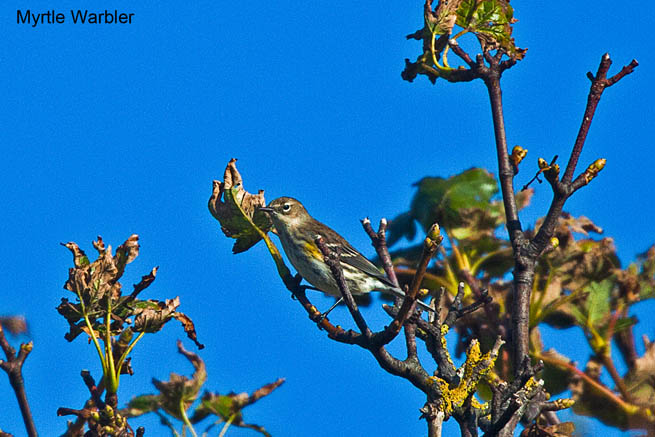
Yellow-rumped Warbler, Inishmore, Galway (Photo: Ron Marshall)

Woodchat Shrike, Inishmore, Galway (Photo: Dermot Breen)
Just down the coast in County Cork, last week's Yellow-rumped Warbler remained on Dursey Island until 6th. Further Nearctic passerine arrivals included a Gray-cheeked Thrush on St. Agnes (Scilly) from 7th and a new Buff-bellied Pipit on Bryher on 9th; the lingering St. Mary's individual was still present, as were familiar birds at Carrickfergus (Antrim) on 5th and Baile an Reannaigh (Kerry) on 9th.
Scilly also scored the biggest 'Sibe' of the week: a Sykes's Warbler spent a couple of days on Tresco on 5th–6th. Meanwhile, just a short hop across on the Cornish mainland, a White's Thrush seen briefly in Cot Valley late morning on 8th sadly melted away as quickly as it had been found — an unsurprising outcome in such a well-vegetated valley given the elusive nature of the species. Cornwall also produced a couple of other excellent eastern birds in the form of a Paddyfield Warbler at Church Cove on 8th–10th and an Olive-backed Pipit at Pendeen on 9th–10th, while a second OBP was on Lundy (Devon) on 7th.

Paddyfield Warbler, Church Cove, Cornwall (Photo: James Packer)
In the Outer Hebrides, last week's Swainson's Thrush had moved south to the plantation at Brevig, Barra on 4th, where it was duly trapped and ringed — testament to just how exhausted these transatlantic wanderers must be on arrival, it was found to have fat score of 0.
In a comparatively quieter week to the previous three, it was perhaps no surprise that greater attention was paid to returning wildfowl. On Islay (Argyll), a Richardson's Canada Goose was seen with the Barnacles at Loch Gruinart on 4th and 6th. Last week's Lesser Canada Goose was also noted there on the latter date, and a second parvipes — a possible — was with Pink-footed Geese at Martin Mere (Lancs) on 7th. A Black Brant at Wakering Stairs (Essex) on 6th preceded two in the county at Leigh-on-Sea on 8th, and another was at Wyke Regis (Dorset) on 10th.
Drake American Wigeon returned to Loch Bee, South Uist on 4th and to Angler's Country Park (W Yorks) on 8th, and a third was seen at Tacumshin (Wexford) from 7th. A drake Green-winged Teal at Kinneil Lagoon (Forth) on 5th was evidently beginning to show the first hint of its diagnostic vertical body stripe. Less troublesome was the drake Black Duck still on Achill Island (Mayo) on 5th, with a drake Ring-necked Duck also on the island on 6th–7th. The usual drake was also still at Orgreave Lagoons (S Yorks) on 7th, while Chew Valley Lake (Somerset) continued to host the drake Lesser Scaup. The drake King Eider also remained off Burghead (Moray/Nairn), and a female Surf Scoter was discovered in the traditional location of Brandon Bay (Kerry) on 7th.
With reasonably settled conditions predominating, seawatching proved generally quiet, although a Fea's-type Petrel flew past Mizen Head (Cork) late morning on 5th and a late Wilson's Storm-petrel gave excellent views as it cruised past Ballynahown Bay (Galway) on 4th. A Cory's Shearwater was reported past Skinningrove (Cleveland) on 9th, and small numbers of Little Auks in the north included nine off North Ronaldsay (Orkney) that day.
A rush of Glossy Ibis is one of the expected features of a contemporary British and Irish autumn, and this week witnessed the first decent arrival of the year. As always, the southwest dominated, with 15 west over Land's End (Cornwall) on 6th and a flock of seven over Marazion and later at Sennen that day. No doubt part of the original flock(s), birds were seen at various sites in west Cornwall over subsequent days. Three were at Brew Pool on 7th, while at least one took up residence at Trevorian Pool from 8th. The legacy of previous influxes, birds also remained at Marloes Mere (Pembrokeshire) and on the Ouse Washes (Cambs).

Glossy Ibis, Trevorian Pool, Cornwall (Photo: Ian Webster)
A Purple Heron arrived at Radipole Lake (Dorset) on 6th, remaining there to 9th and perhaps accounting for a report from Morden Bog on 8th. A Cattle Egret was at Catcott Lows (Somerset) from 4th, while the Outer Hebrides individual remained at Loch nam Magarlan, North Uist on 4th. Away from Somerset, around ten Great White Egrets were mostly regular birds, although one over Fiskerton Fen (Lincs) on 4th was notable, as were the two seen at Parkgate Marsh (Cheshire) that day and another at Abberton Reservoir (Essex).

Purple Heron, Radipole Lake RSPB, Dorset (Photo: Mike Trew)
It was only a few years ago that Northern Harriers were considered ultra-rare stragglers to this side of the Atlantic but, since the 'influx' of autumn 2010, several individuals have been identified. The latest in the series was yet another apparent juvenile at Tacumshin from 6th, representing at least the fourth bird seen at this site over the past two years! Back in Britain, the lingering adult female Pallid Harrier was still at Firsby Reservoir (S Yorks) on 7th but not since, while another was identified at Levenwick (Shetland) on 5th. Rough-legged Buzzards were seen in Kent, Essex and South Yorkshire this week.

Pallid Harrier, Firsby Reservoir, South Yorkshire (Photo: Andy Walker)
Undoubted shorebird highlight of the week was the Upland Sandpiper heard over Lissagriffin (Cork) on 7th — the species' bubbling call is arguably one of the most beautiful and distinctive noises uttered by any species of wader. Back in Dorset, the first-winter Short-billed Dowitcher was still showing well at Lodmoor (Dorset) on 6th, but has not been seen since and it appears it has finally moved on to pastures new — perhaps Hampshire birders should be checking their local marshes that little bit more closely?
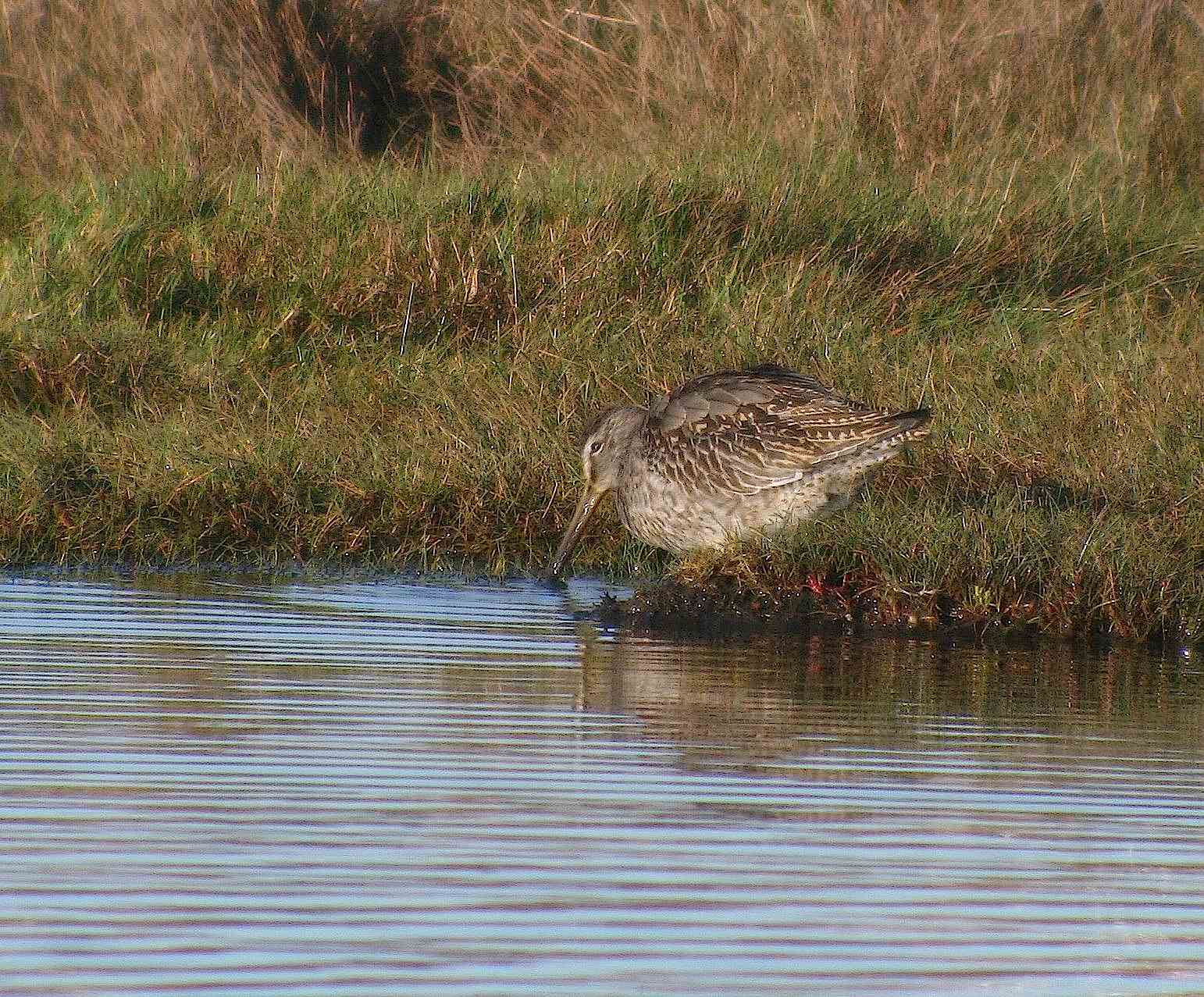
Short-billed Dowitcher, Lodmoor RSPB, Dorset (Photo: Eddie Wang)
The most productive week of the autumn for Long-billed Dowitcher records saw five birds recorded, although the juvenile at Lough Beg (Cork) on 7th may have referred to that seen along the coast at Rosscarbery briefly on 9th. Elsewhere, an elusive juvenile was at Loch Grogarry, North Uist on 4th, 6th and 8th, while another was at Alkborough Flats (Lincs) on 4th–5th and the usual Gloucestershire individual was still commuting between Slimbridge and Walmore Common. A juvenile Lesser Yellowlegs was a good Dublin find at North Bull Island from 8th.

Lesser Yellowlegs, Bull Island, Dublin (Photo: Niall Keogh)
American Golden Plovers continued to be prominent, with at least fifteen recorded. In Scotland, birds remained on Shetland, Orkney, Tiree (Argyll) in addition to at least three in the Outer Hebrides and a new individual at The Wig (Dumf & Gall). Irish birds were seen at Ballydonegan and Pilmore (both Cork) on 7th and 9th respectively, while at least two remained on The Mullet (Mayo) and another flew over Carrahane Strand (Kerry) on 5th. At least two juveniles toured southeast Wexford with two at Tacumshin on 7th and a singleton at Lady's Island Lake on 9th, while another juvenile was noted at The Curragh (Kildare) on 8th — this inland site seems a reliable location to find an AGP in autumn. Finally, a juvenile on St. Agnes then St. Mary's (Scilly) was an almost expected arrival given the excellent autumn for the species.
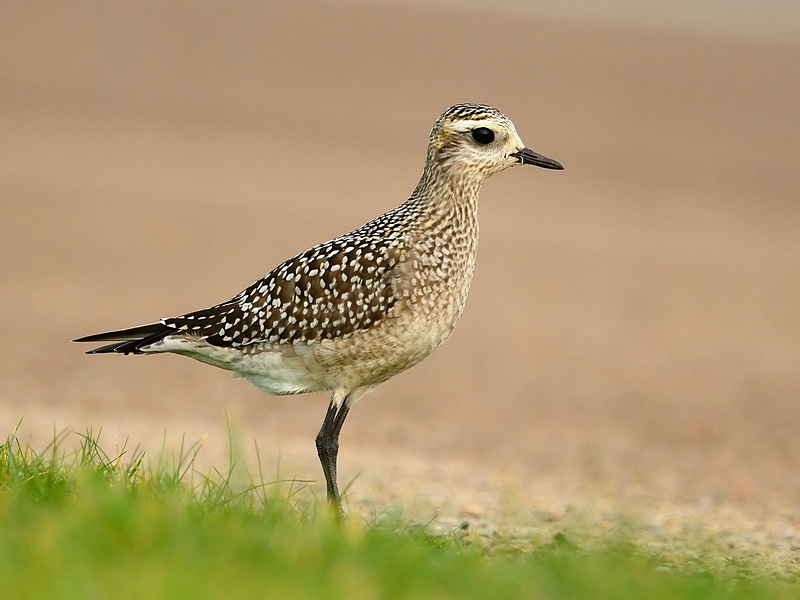
American Golden Plover, St. Mary's, Isles of Scilly (Photo: Dave Perrett)
With news of three-figure flocks reaching the Azores, it was perhaps no surprise to see a mini-arrival of White-rumped Sandpipers way out west. In Kerry, a first-winter was at Smerwick Harbour on 9th, while another was in the county at the recently discovered shorebird hotspot of Reenroe Beach on 7th. On 6th, one was at Seafield (Clare), with the long-staying adult still at Tacumshin that day. Meanwhile, Cork laid claim to the week's only Baird's Sandpiper, a juvenile at Rosscarbery from 4th.

White-rumped Sandpiper, Baile an Reannaigh, Kerry (Photo: Davey)
Both Buff-breasted and Pectoral Sandpiper numbers fell away this week. Just a handful of Buff-breasts included a (presumed) new arrival at Slimbridge (Glos) on 4th, while others remained on St. Mary's (Scilly), at Goswick (Northumberland) and at Bridges of Ross (Clare). Pectoral Sandpipers were slightly more numerous: a dozen or so included three at Loch Grogarry, North Uist on 7th and two at Liniclate, Benbecula the following day. Further new birds were seen Norfolk, Gloucestershire, Somerset and Devon. In Lincolnshire, the juvenile Red-necked Phalarope also remained near West Ashby to at least 8th.

Pectoral Sandpiper, Slimbridge WWT, Gloucestershire (Photo: James S Lees)
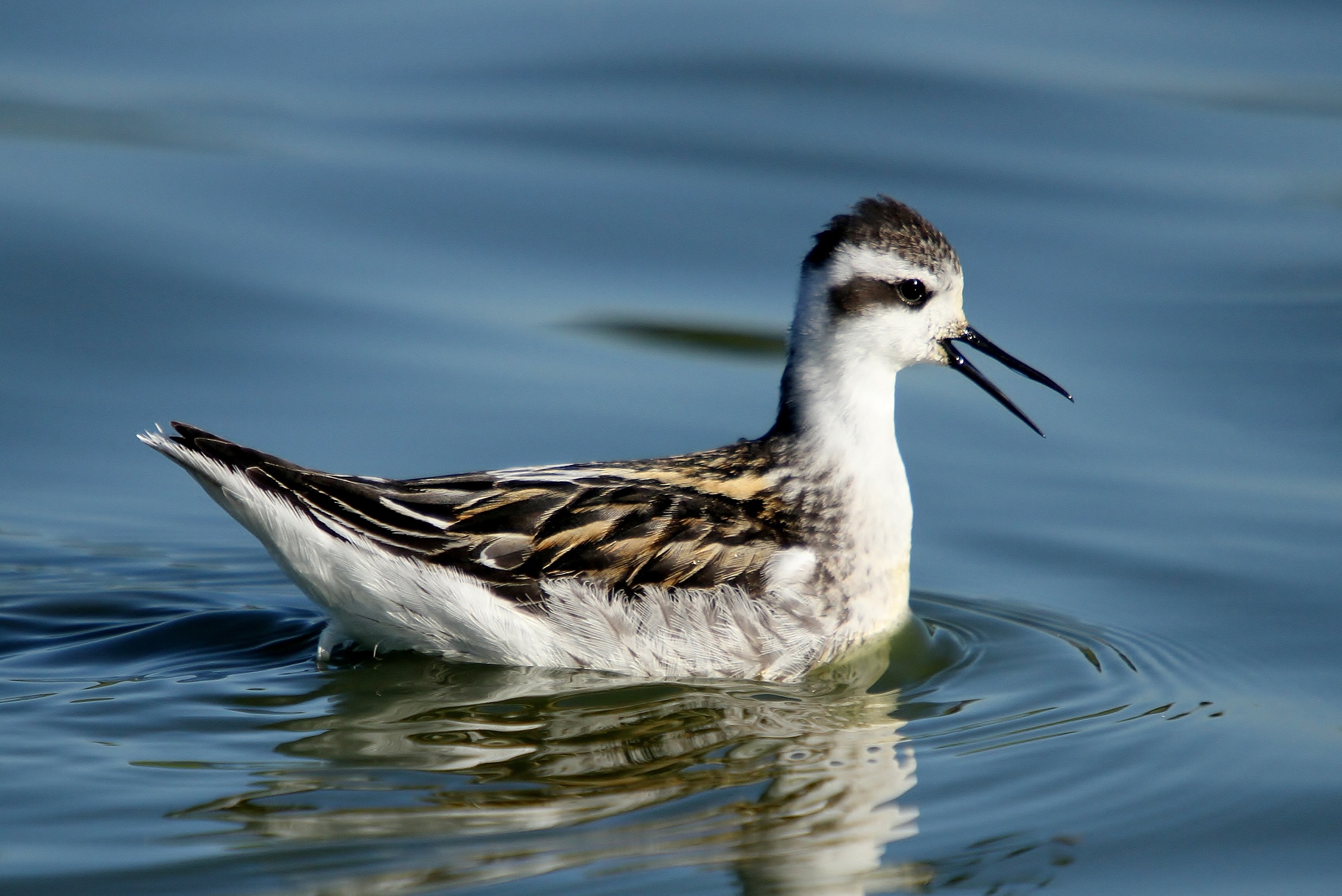
Red-necked Phalarope, West Ashby, Lincolnshire (Photo: anon)
In Antrim, the adult Bonaparte's Gull was still in Larne on 5th, while the Forster's Tern continued to frequent Soldier's Point (Louth) throughout the week. Ring-billed Gulls also remained in the Emerald Isle at Groomsport (Down) and Black Rock Strand (Kerry), while the adult also remained at Kinneil Lagoon (Forth).
A single Red-rumped Swallow at Marazion (Cornwall) in the late morning on 5th quickly multiplied into an incredible seven birds there for the rest of the day and early the next morning. Although flocks this size have been seen in the distant past, it has been some years since a concentration this large was observed. What was particularly galling was that a Cliff Swallow was present with a flock of nine Red-rumped on Ouessant Island, Brittany, the previous day and, on 5th, that flock had diminished to just two Red-rumped and the Cliff — perhaps a coincidence, but more likely a very near miss for Cornwall, it seems! Birds reported around Cornwall over the following few days were presumably members of the original flock, and included two over Land's End on 6th. However, birds over South Milton Ley and Plymouth (Devon) on 6th and 7th respectively probably relate to separate individuals.
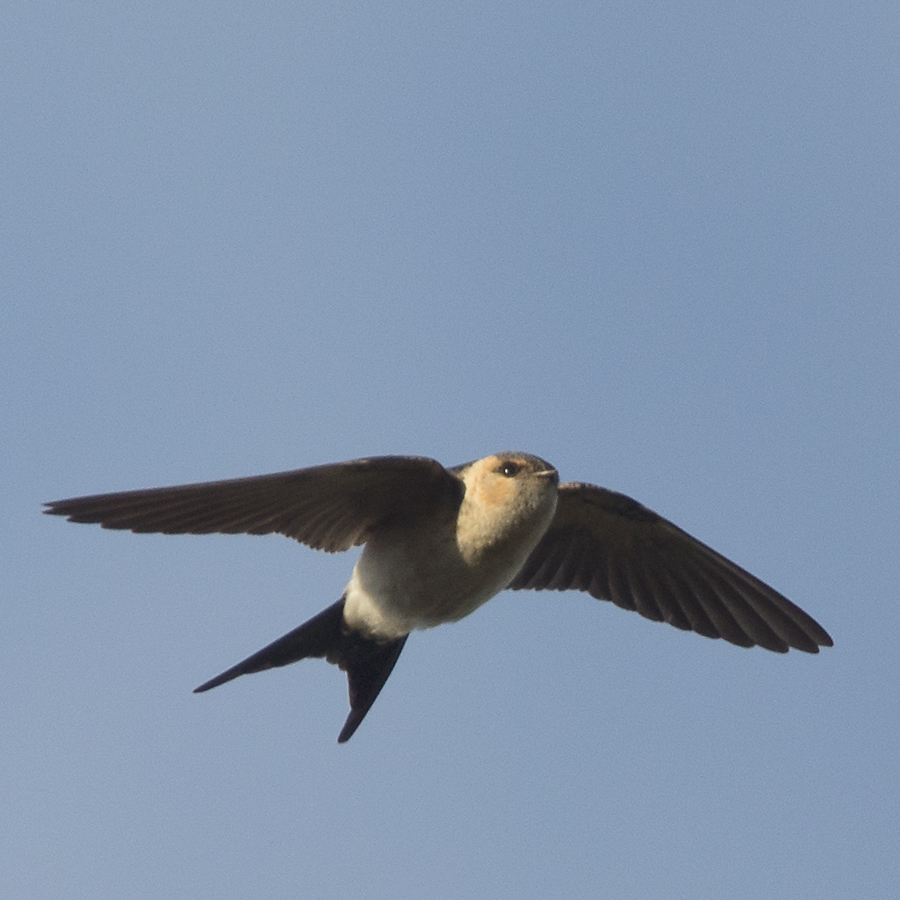
Red-rumped Swallow, Marazion, Cornwall (Photo: Tony Mills)
Never an easy bird to see in Britain and Ireland, Red-throated Pipits were noted briefly on St. Martin's (Scilly) on 7th and at Orcombe Point (Devon) on 9th. The week's only Citrine Wagtail was seen on none other than Fair Isle on 5th. Fair Isle also hosted a Black-throated Thrush on 6th, and the long-staying Lanceolated Warbler was still there all week.
Other bits and pieces from the Northern Isles included a Great Reed Warbler at Rerwick (Shetland) on 5th, a Blyth's Reed Warbler on North Ronaldsay (Orkney) on 9th and a Little Bunting on Whalsay (Shetland) on 5th. Last week's Isabelline Shrike remained at Toab (Shetland) to 5th and Hoswick's Siberian Stonechat was also still present for much of the week. The Hornemann's Arctic Redpoll was still at Norwick, Unst early on with a second on Out Skerries on 5th, while an Arctic Redpoll on Westray (Orkney) on 6th was presumably of this subspecies. Further possibles were reported from Uyeasound, Unst and, impressively, from St. Agnes (Scilly) on 4th. The Woodchat Shrike on Inishmore (Galway) was the only representative of its species this week and the first anywhere since the beginning of September.
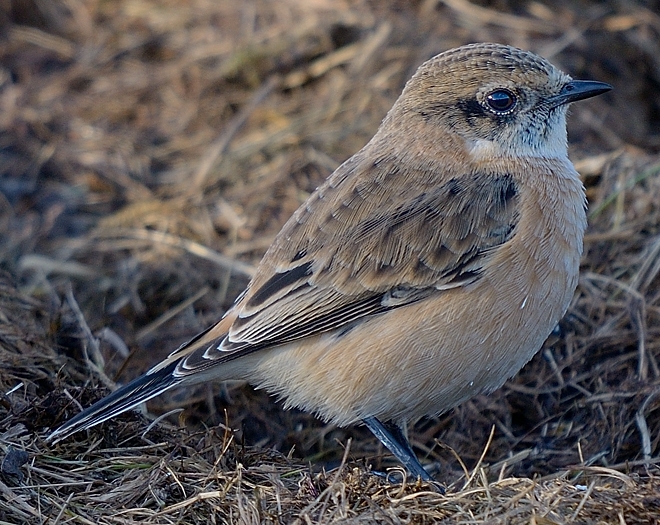
Siberian Stonechat, Hoswick, Mainland, Shetland (Photo: Mike Thrower)
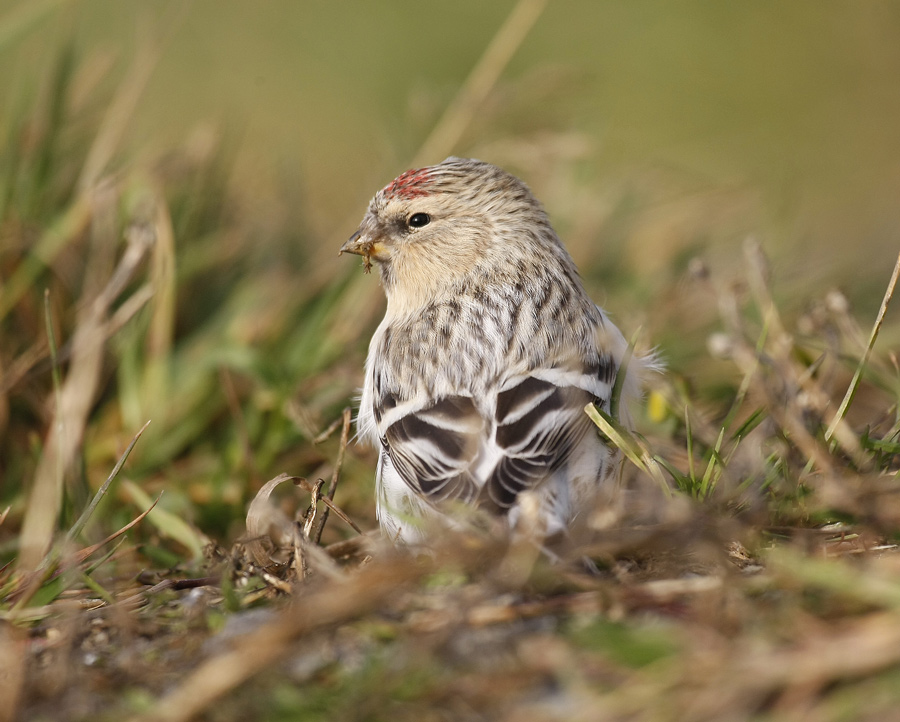
Hornemann's Arctic Redpoll, Norwick, Unst, Shetland (Photo: Dave Hutton)
In Cork, an elusive Blyth's Reed Warbler was an excellent find at Firkeel on 8th, with Barred Warbler also seen there during the week. A Melodious Warbler was on Skokholm (Pembrokeshire) on 6th–7th while the Western Bonelli's Warbler was last seen on St. Martin's (Scilly) on 6th. Scilly also clung on to juvenile Rose-coloured Starlings on St. Mary's and St. Martin's, while a third was reported with Starlings at Barnby in the Willows (Notts) on 6th.

Western Bonelli's Warbler, St. Martin's, Isles of Scilly (Photo: Carl Chapman)
A Red-breasted Flycatcher was reported from Crosby Marina (Lancs) on 9th with another in Margate (Kent) the same day. Around eight others included two on Barra (Outer Hebrides) on 5th, at least three on Shetland and at least one on St. Mary's (Scilly). Half a dozen Red-backed Shrikes included a bird at Everleigh (Wilts) on 8th–10th and another on Lewis (Outer Hebrides) on 7th in addition to birds still in Cornwall, Devon, Dorset and East Yorkshire. A smattering of Common Rosefinches included one on Cape Clear (Cork) on 8th–9th, with another seen on Inishbofin (Galway). Ortolans remained on St. Mary's (Scilly) and at Mizen Head (Cork).
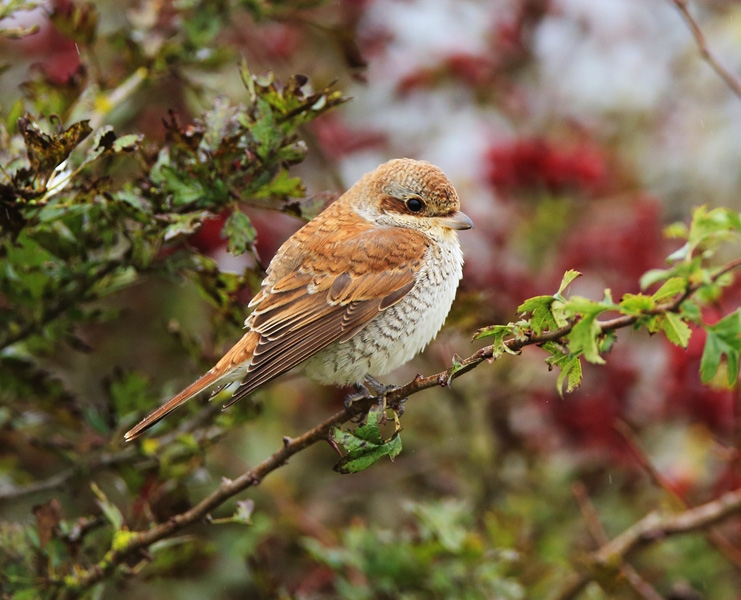
Red-backed Shrike, Everleigh, Wiltshire (Photo: Mike Trew)

Common Rosefinch, Boddam, Mainland, Shetland (Photo: Richard Smith)

Ortolan Bunting, St. Mary's, Isles of Scilly (Photo: Carl Chapman)
Photo of the Week
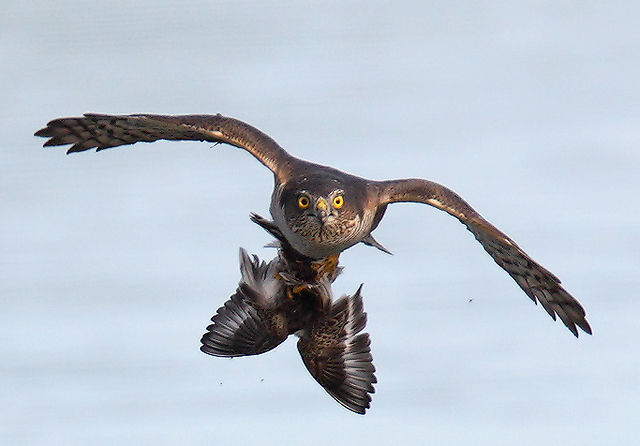
Sparrowhawk with Dunlin, Conwy RSPB, Conwy (Photo: Mike Nesbitt)
As the only species to appear in thirteen BirdGuides Photos of the Week, there's little more to be said about the photogenic nature of Sparrowhawks. This week, bird photographer Mike Nesbitt would have needed no reminding either as he witnessed the spectacle of one of these raptors repeatedly chasing waders at Conwy RSPB reserve. Eventually, the 'sprawk' finally managed to strike lucky as it caught a (not so lucky) Dunlin. As the hawk carried its prey directly towards him, Mike managed to keep his long telephoto trained accurately on the bird to capture the moment brilliantly. The head-on angle gives the pair a dramatic shape against the plain background and makes the most of the hawk's piercing yellow eyes. This image makes Mike the sixth photographer to get their first Photo of the Week in the last seven weeks. It's great to see so much emerging talent out there!
Other notable photos

Osprey, Ashford Reservoir, Somerset & Bristol (Photo: Tim Taylor)

Jay, undisclosed site, Greater London (Photo: Chris Upson)

Sardinian Warbler, Greece (Photo: Mark Bicknell)
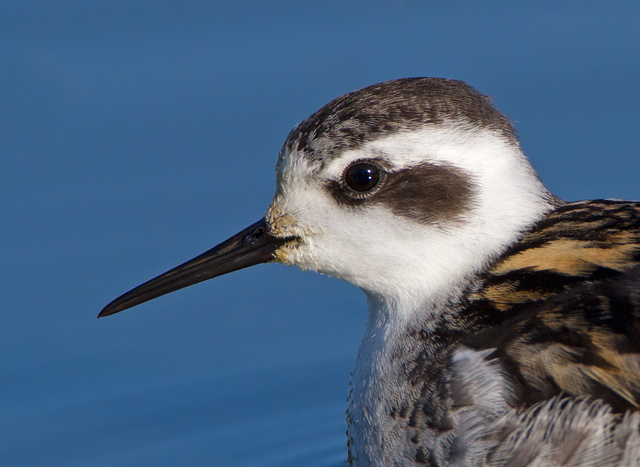
Red-necked Phalarope, West Ashby, Lincolnshire (Photo: Russ Telfer)
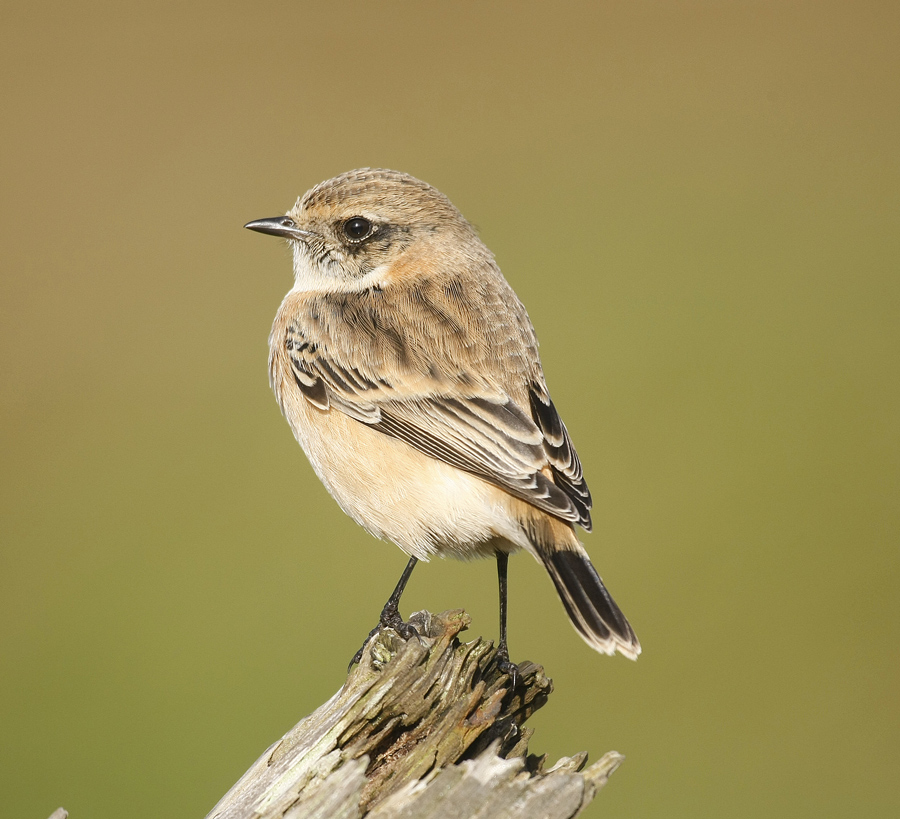
Siberian Stonechat, Hoswick, Mainland, Shetland (Photo: Dave Hutton)
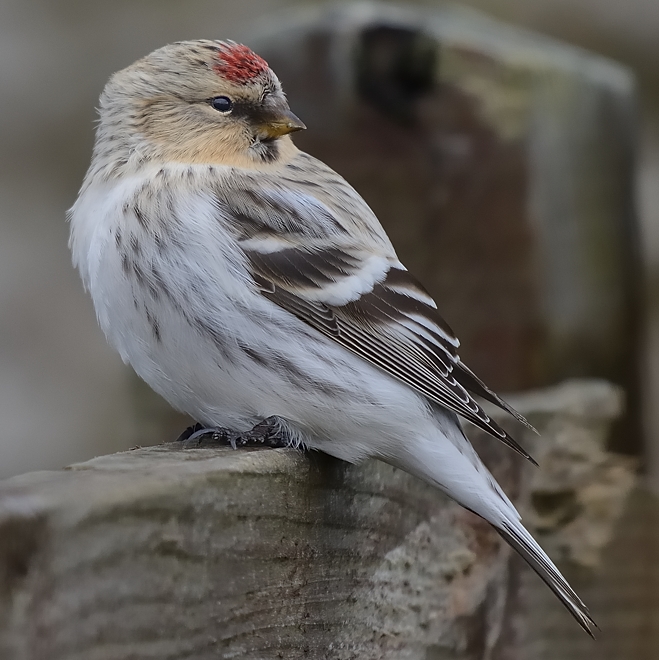
Hornemann's Arctic Redpoll, Norwick, Unst, Shetland (Photo: Mike Thrower)

Bearded Tit, Titchwell RSPB, Norfolk (Photo: Garth Peacock)

Raven, Portrush, Antrim (Photo: Ian Dickey)
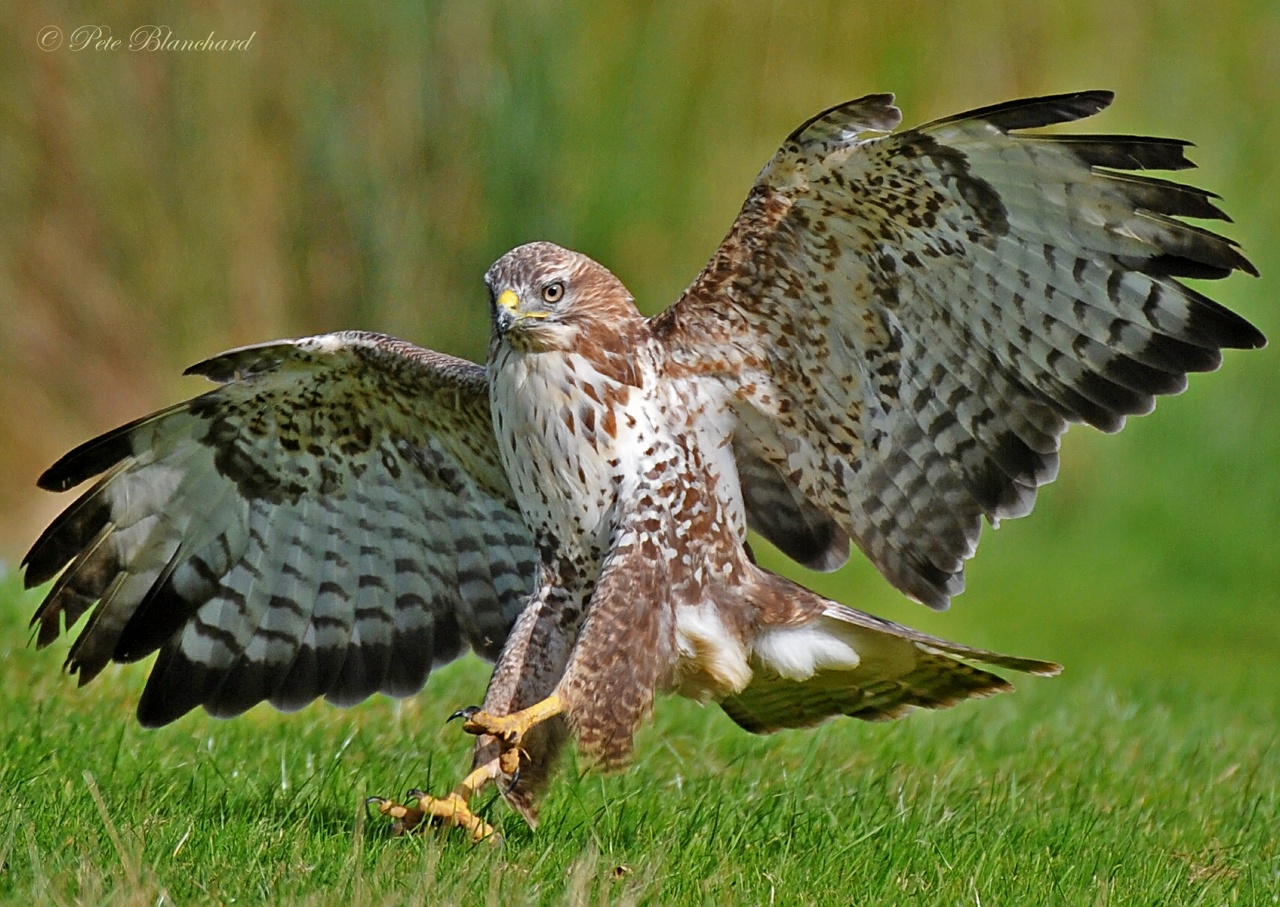
Buzzard, Gigrin Farm, Powys (Photo: Pete Blanchard)

Firecrest, Bawdsey, Suffolk (Photo: John Richardson)

Dotterel, Robert's Cove, Cork (Photo: Graham Clarke)

Little Stint, Hoylake, Cheshire (Photo: Graeme Risdon)

Purple-throated Mountaingem, Costa Rica (Photo: Chris Rose)
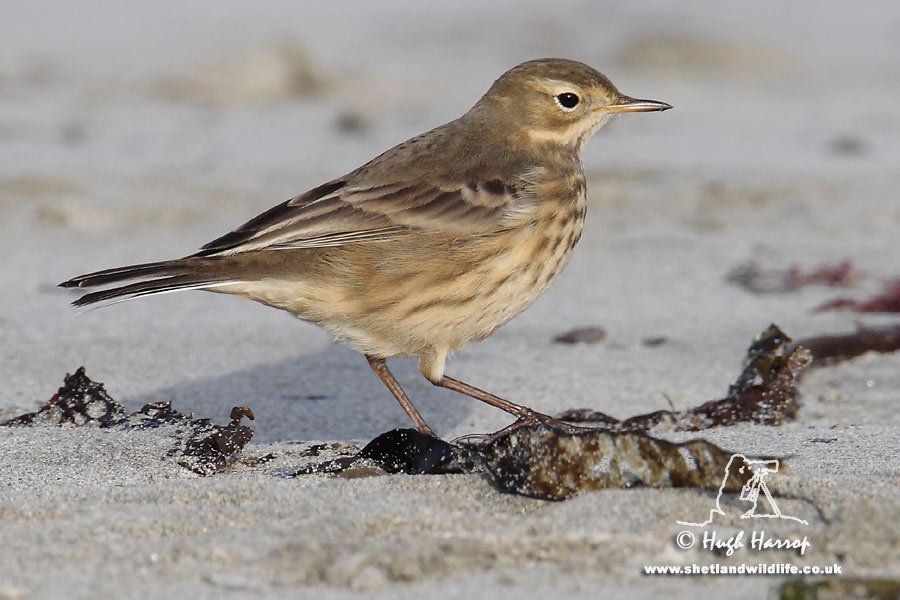
Buff-bellied Pipit, Scousburgh, Mainland, Shetland (Photo: Hugh Harrop)
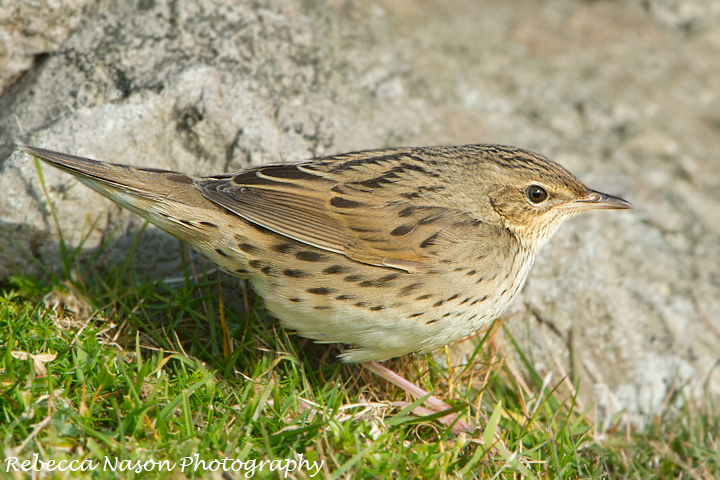
Lanceolated Warbler, Fair Isle, Shetland (Photo: Rebecca Nason)


